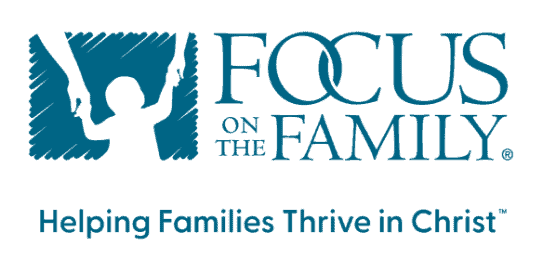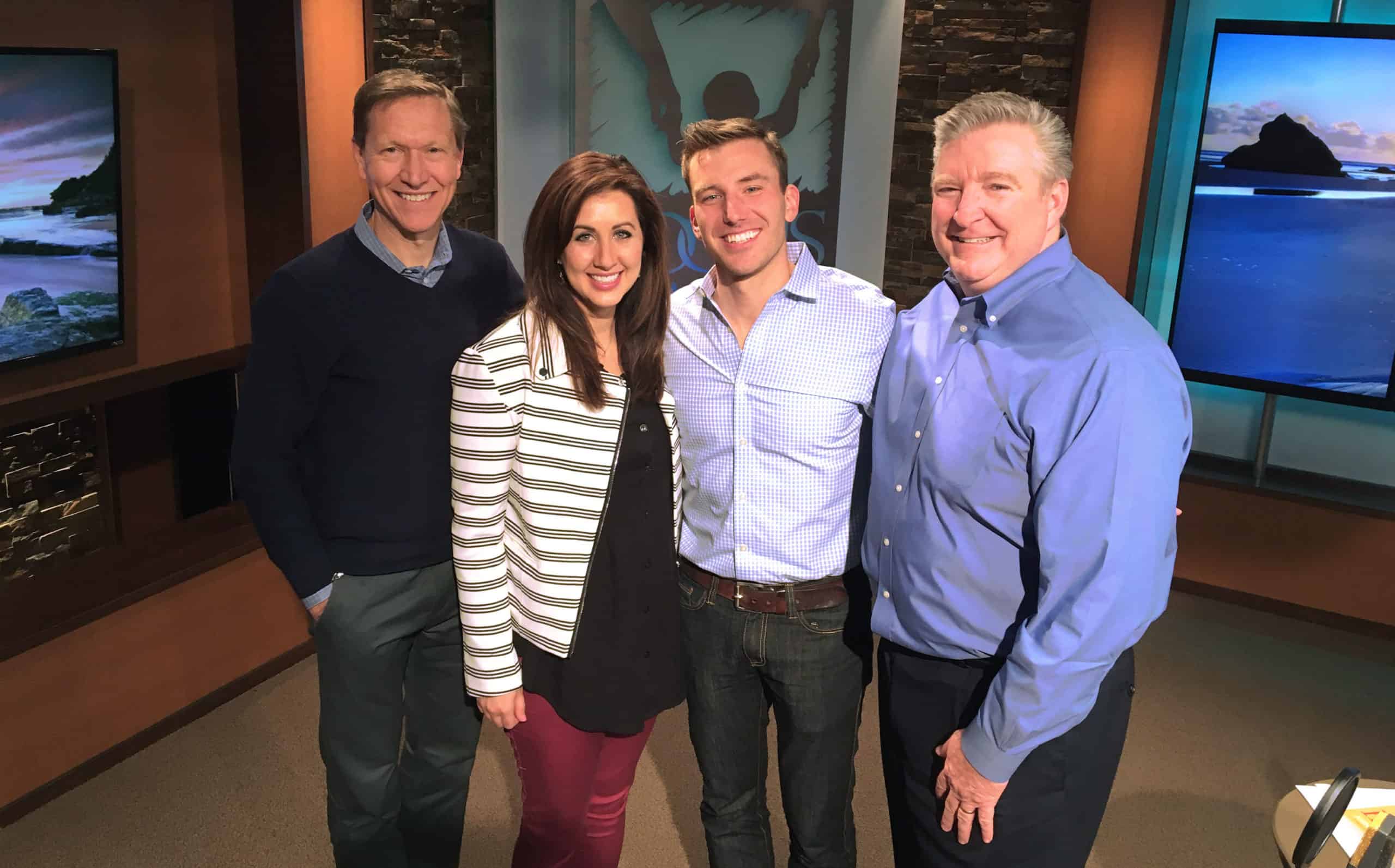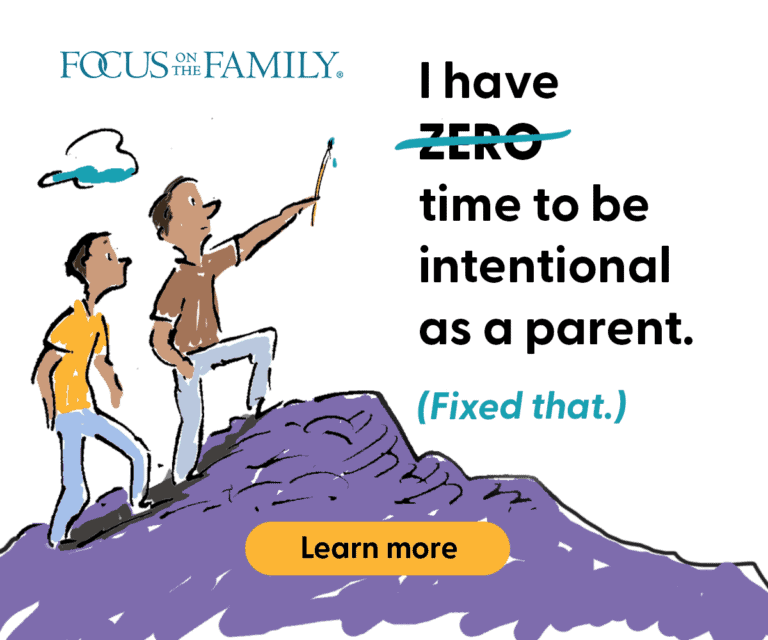“I feel flippy in my tummy.”
If you tuned in to the Focus on the Family broadcast on March 10, 2020, you heard Christi Straub describe her young son’s poignant admission that he was afraid to go to his new school. It was just one of the thousands of memorable moments captured in Focus on the Family’s recording studio over the past 43 years.
While each daily program is as unique as the guests being interviewed, there’s always an array of behind-the-scenes details that are meticulously planned before every show. When Christi and her husband, Josh, recorded the program “Helping Children Understand How They Feel,” the Focus Broadcasting staff had already logged many hours preparing for the Straubs’ visit.
An invitation
Daniel Robbins, one of Focus on the Family’s senior producers, is part of an eight-member team. They are constantly researching potential interview guests who can address specific topics with expertise and fresh, practical insights. In 2019, Daniel learned of the Straubs’ new children’s book, What Am I Feeling? Previously the Straubs had shared their family counseling perspective on two different broadcasts. And listeners had enjoyed both of them.
“As I corresponded with the Straubs, I recognized that their simple message about feelings was backed by alot of research,” Daniel says. “Josh and Christi have the counseling credentials, but they also have young kids. They’re living this.”
Once the Straubs agreed to be interviewed, Focus on the Family’s producers developed a framework for the upcoming discussion between the Straubs and broadcast hosts, Jim Daly and John Fuller.
“We give our hosts a detailed outline that highlights relevant facts and stories, suggests interview questions and provides opening and closing comments to lay out a meaningful arc for the flow of the interview,” Daniel says. “It’s not a script; I know Jim and John will personalize the process and use the outline as a guide for the conversation.”
In the studio
With all the prep work completed, the team was ready to record. On Jan. 17, 2020, Josh and Christi arrived at Focus on the Family headquarters in Colorado Springs, Colorado. They joined Jim and John in the studio. And a recording engineer, a producer and Focus’ executive producer were in the control room.
“During the taping, I collaborate with the hosts to make sure the relevant facts are covered, identify any mistakes and offer suggestions as the interview progresses,” Daniel says. “Our executive producer, Rob Kirkpatrick, represents the objective listener.” He does the following:
- evaluates the interview
- assists the producer in covering contingencies, if there are any
- answers general questions from the hosts and guests
Like most of the 130 or so interviews conducted each year, eight video cameras are arranged around the studio and control room. recorded the exchange between Jim, John and the Straubs. First, a team member operated a camera on a jib inside the studio. This filming combined with an unmanned camera on a track created motion for the show. Then the control room captured views from stationary cameras.
Editing and polishing
The editing process began after the production team saved the finished interview on a computer as a multi-track audio file. Radio broadcast formatting has strict time constraints. Each day’s edition of the Focus on the Family broadcast has to be exactly 28 minutes. This allows local stations to air pre- and post-show material (weather, announcements, etc.) in the allotted half-hour time slot.
“We recorded [with the Straubs] for more than 40 minutes,” Daniel says. “There was a lot of laughter and even some crying during this session. With everyone talking at once—which occurred several times—the editing process can be very challenging.”
After a word-for-word transcript of the interview was completed, the recording was reviewed several times. Suggested edits were marked on the transcript and given to editing teams. The team then used sophisticated audio software. It helped trim the conversation, balance volume levels, clean up vocal stutters and add the opening and closing music. It’s a process that typically takes between 16 and 20 hours.
The Films team
While the audio editors were hard at work, the Focus on the Family Films team was also busy. They edited the video version of the interview for posting on YouTube. In some ways, the process is similar to audio editing. But Erin Berriman, director of Film Production, says there are some unique nuances to video.
“We’re often able to include more content since the YouTube version doesn’t have a strict time limit like the radio version,” Erin explains. “Another aspect that video provides is allowing the viewer to see all the emotions expressed during the show. We capture the hand gestures, the grimace on a face, the tears in the eyes, the grin on Jim’s face, and a nod of approval, for example. There are nonaudible moments that the camera can capture that add to the overall viewing experience.”
Hitting the airwaves
When all the editing was done, the finished broadcast still had to go through a few more handoffs. Each evening, Sunday through Thursday, the next day’s radio broadcast audio file is sent from Focus headquarters in Colorado Springs to a computer in a satellite uplink facility in North Carolina, as well as backup servers in California. At scheduled times, the program is then beamed to local stations via satellite (or internet for stations that can’t have reception dishes because of zoning or building codes). Each station decides whether to broadcast the show live as they receive it or store it on their own computers to air later in the day. This depends on their specific programming schedule. Meanwhile, the Focus Films team uploads the video edition to YouTube.
Finally, on March 10, it was time for the Straub interview to hit the airwaves. Based on tremendous feedback, the program “Helping Children Understand How They Feel” was deemed a hit. The show was ultimately selected for re-air in December as part of an encore presentation of 2020’s most popular broadcasts.
“There are many details that can be challenging,” Daniel says. “But at the end of the day, I relish my role on this team of storytellers. I savor the collaboration process, working hand in hand with the guests, our hosts, the editors and our entire team to craft broadcasts that share an encouraging message—and ultimately glorify God.”
Scott Johnson is a senior writer in the Ministry Values division at Focus on the Family.














